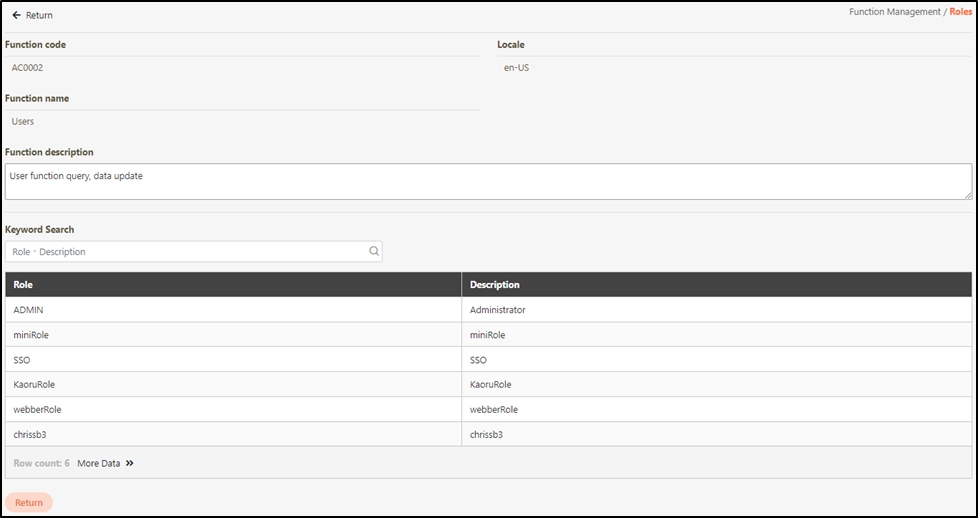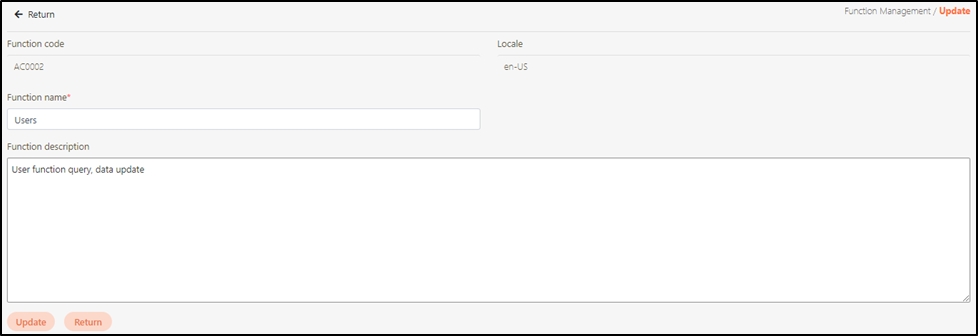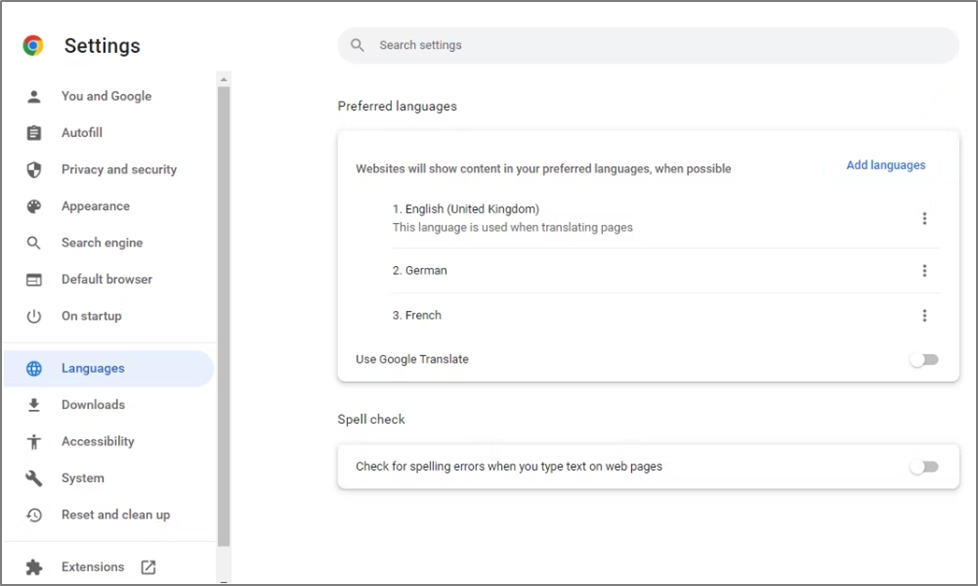Function Management
Path: Development Mode > Function Management
Displays the system functions (System Menus) and corresponding function codes.
If the function code is AC0X, it means that it is the master system; if the function code is AC0XXX, it means that it is a sub-system.
Both the main system and subsystems display names according to the browser's language settings. For more information, refer to Switch and Query Languages.


Search Function
Enter keywords to search for the desired system function.

Import and Export Function
To modify multiple functions at once, click Export to export the functions as an .xlsx file. Modify the desired fields, click on the ![]() icon, and then click Import to import the modified file without renaming it.
icon, and then click Import to import the modified file without renaming it.
The rules are as follows:
1. Based on FUNC_CODE + LOCALE, if a duplicate exists, it will be updated; if no duplicate exists, a new record will be added.
2. This is mainly used for multilingual support.

View Roles Associated with Function
In this section, you can find instructions on how to view roles associated with the function.
Search for the function to view, and click on the
 icon to access the associated role page.
icon to access the associated role page.

View the roles associated with the function.

Update Function
Search for the function to modify, and click on the
 icon to access the update page.
icon to access the update page.

Modify the desired fields, and click Update to save and exit.
Changes made to the Function Name field in a version not associated with the regional language will not take effect, as language switching is controlled by the regional language setting.


Switch and Query Languages
Browsers usually have a default language; to change the browser language, you can select the language under Settings > Languages > Preferred languages of the browser.

Select Chinese (Traditional) or Chinese (Simplified) to change the default language of the browser to Traditional Chinese (zh-TW) or Simplified Chinese (zh-CN), and select English (US) to switch back the default language to English (en-US).
The language of the system is hidden under ReqHeader > locale. Press F12 on the keyboard to open developer tools, and select the tab Network > Payload at the bottom-right tab, and expand ReqHeader to locate the locale line.

Last updated
Was this helpful?
